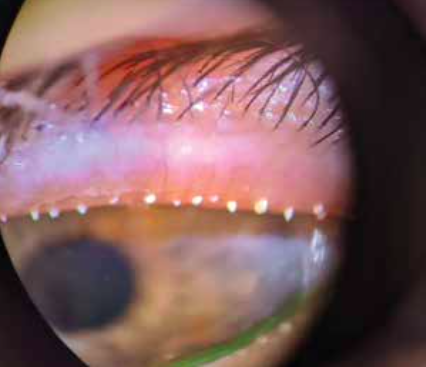DRY EYES – PART 1 – MEIBOMIAN GLAND DYSFUNCTION
Are your eyes gritty, sandy, itchy, burning, dry, red, and irritated? Half of the patients I see every day have these typical symptoms of dry eye. The eye surface needs high quality moisture for clear comfortable vision. Our tear film has 3 layers. The innermost layer is a sticky protective mucin. The middle layer is a thick watery layer. The outermost layer is a very important thin oily layer that prevents evaporation and stabilizes our tears between every blink. Our tears contain more than 1,800 different proteins!
The most common form of dry eye is a problem with the oily layer. Blocked oil glands in the eyelids lead to insufficient or low-quality oils that are cloudy, hardened, or thick like toothpast

e (see photo), instead of clear and thin like olive oil. Home treatments like warm compresses and massage can help get the oils flowing. When severe, it is helpful to have your eye doctor squeeze out the secretions to help clean them out better. Sometimes prescription drops or ointments need to be used to reduce the inflammation and bacterial load that causes the clogging. Demodex mites, a tiny parasite, can burrow into the glands, which leads to styes or dry irritated itchy eyes. Oral antiparasitics, or topical tea tree oil washes specially formulated for delicate eyes, or intense pulsed light therapy can all work to kill the mites and reduce inflammation rapidly from a stye or blocked glands.
Winter may worsen dry eye symptoms due to cold dry air causing faster evaporation of your tears. If you have been suffering from uncomfortable eyes, call to see how Dr. Schiedler may help!


